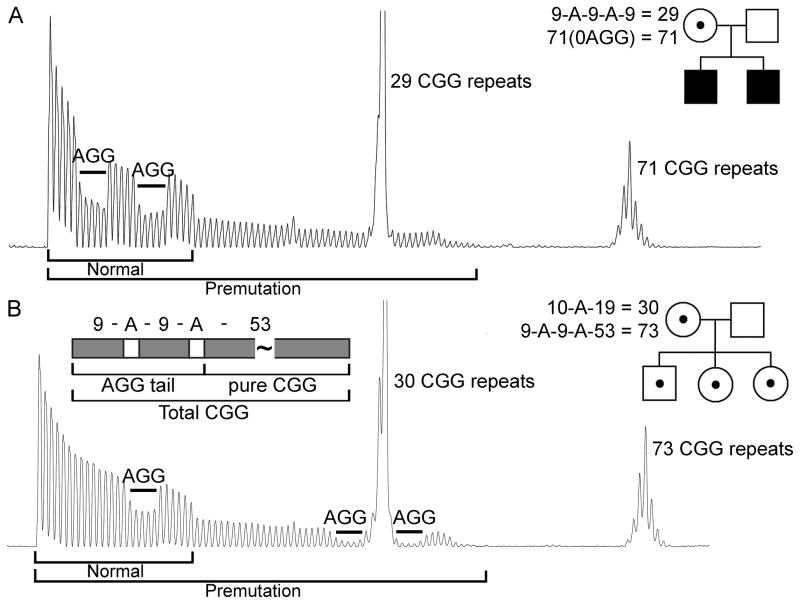Figure 1.
Examples of electropherogram patterns of CGG-repeat-containing PCR products for two female premutation carriers, one with 2 AGG interruptions in the normal allele (29 CGG repeats) and no AGG in the premutation allele (71 CGG repeats) (A) and one with 1 AGG interruption in the normal (30 CGG repeats) and 2 AGG interruptions in the premutation allele (73 CGG repeats) (B). The corresponding pedigrees are provided for each subject, illustrating the effect of the presence of AGGs on transmission to a premutation (2 AGGs present in the maternal allele, 73 CGG) or to a full mutation (0 AGG present in the maternal allele, 71 CGG) offspring. In both females, the normal and the premutation allele lengths, shown as serial peaks, are illustrated at the bottom of each electrophoregram as a black line. Location and number of the AGG interruptions for each allele were determined as described in the Supplementary Appendix. A diagram showing the total CGG-repeat length (inclusive of AGGs), pure CGG-repeat length, and the AGG-containing CGG-repeat “tail” within an FMR1 premutation allele is also shown.

